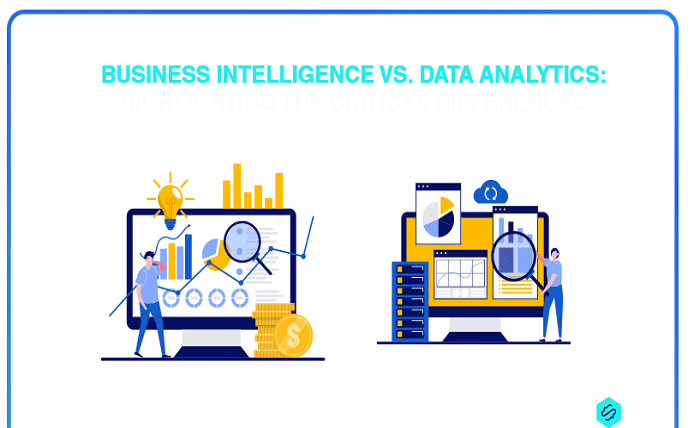Understanding Business Intelligence and Data Integration

In the rapidly evolving business landscape, organizations increasingly rely on data to drive decision-making processes and strategic initiatives. Business Intelligence (BI) encompasses a range of technologies, applications, and practices that collect, analyze, and present business data. The primary goal is to support better business decisions by providing timely and accurate insights. However, the effectiveness of BI is heavily contingent upon the quality and accessibility of the data being analyzed. This is where the importance of data integration becomes paramount.
The Importance of Data Quality
Data quality is a critical factor in the success of any BI initiative. Poor quality data can lead to misguided decisions, misplaced investments, and ultimately, failure to achieve business objectives. Data quality encompasses factors such as accuracy, completeness, consistency, and timeliness. To ensure high-quality data, businesses must adopt robust data management practices, which include data cleansing, validation, and regular audits. However, the challenge lies in the fact that data often resides in disparate systems, each with its own formats, structures, and protocols. To overcome this fragmentation, organizations must prioritize data integration, which unifies and consolidates data from multiple sources into a single, coherent view.
Streamlining Data Sources
Modern enterprises typically operate with a multitude of data sources ranging from traditional databases to cloud services, spreadsheets, and even social media platforms. Each of these sources generates vast amounts of data that can offer valuable insights if effectively harnessed. By implementing effective data integration strategies, organizations can streamline their data collection processes and foster a more holistic view of their operations. This involves establishing standardized protocols for data exchange, ensuring that all data is formatted consistently, and reducing redundancy across systems. With streamlined data sources, organizations can achieve a more comprehensive understanding of market trends, customer preferences, and operational efficiencies.
Empowering Real-Time Analytics
In today’s fast-paced business environment, the ability to analyze and act on real-time data is a significant competitive advantage. Organizations must have access to up-to-date information to make informed decisions quickly. Data integration enhances the capability for real-time analytics by enabling the seamless flow of data across various platforms. For instance, integrating data from sales, inventory, and customer relationship management systems can provide businesses with immediate insights into product performance and customer behavior. This real-time visibility allows companies to respond proactively to market changes, optimize resource allocation, and drive operational improvements.
Facilitating Data-Driven Culture
Creating a data-driven culture within an organization requires more than just implementing BI tools; it necessitates a shift in mindset across all levels of the business. Employees need to understand the value of data and be equipped to leverage it effectively in their roles. Data integration plays a crucial role in this transformation by ensuring that relevant data is easily accessible to all employees, regardless of their technical proficiency. By breaking down silos and promoting transparency in data usage, organizations can foster a culture where data-driven insights are actively sought and utilized in decision-making processes.
Enhancing Customer Insights
In the age of personalization, understanding customer behavior and preferences is vital for businesses seeking to maintain a competitive edge. Data integration allows organizations to amalgamate customer data from various touchpoints, including e-commerce platforms, customer service interactions, social media, and marketing campaigns. This comprehensive view of the customer journey enables businesses to identify patterns, preferences, and pain points, which can inform targeted marketing strategies and enhance customer experiences. By leveraging integrated data, organizations can create tailored offerings that resonate with their audience, ultimately driving customer loyalty and satisfaction.
Driving Operational Efficiency
Beyond customer insights, data integration also plays a fundamental role in improving operational efficiency. By consolidating data from different departments such as finance, HR, supply chain, and production, organizations can identify bottlenecks, redundancies, and areas for improvement. For example, by analyzing data from procurement and inventory management systems, a company may discover that it is overstocking certain items while running low on others, leading to unnecessary costs and potential stockouts. With integrated data, organizations can optimize workflows, improve resource management, and enhance overall productivity.
Navigating Compliance and Security Challenges
As regulatory frameworks around data privacy and protection become increasingly stringent, organizations must prioritize compliance and security in their data management practices. Data integration can aid in this effort by providing a centralized approach to data governance. By consolidating data into a single platform, organizations can implement consistent security protocols, access controls, and auditing capabilities. This not only helps ensure compliance with regulations such as GDPR and HIPAA but also mitigates the risk of data breaches. A well-integrated data environment allows businesses to maintain a clear understanding of their data assets and manage them effectively.
Investing in Future-Ready Technologies
To fully leverage the benefits of data integration, organizations should invest in modern technologies that facilitate seamless data exchange and interoperability. This includes adopting APIs, cloud-based solutions, and data warehousing technologies that support the integration of both structured and unstructured data. Furthermore, emerging technologies such as artificial intelligence and machine learning can enhance data analysis capabilities, allowing businesses to uncover deeper insights and predict future trends. By staying ahead of technological advancements, organizations can ensure that their BI efforts remain relevant and impactful in an ever-changing business landscape.
In summary, the role of data integration in enhancing business intelligence cannot be overstated. By streamlining data sources, empowering real-time analytics, facilitating a data-driven culture, enhancing customer insights, driving operational efficiency, navigating compliance challenges, and investing in future-ready technologies, organizations can effectively harness the power of data to inform their strategies and improve overall performance. In a world where data is king, the ability to integrate and analyze it effectively will define the leaders from the laggards in the modern enterprise landscape.




